With the historic first handshake in space between astronauts and cosmonauts just one month away, preparations moved into high gear for the Apollo Soyuz Test Project (ASTP), the first docking between American and Soviet spacecraft. Workers continued to prepare the Apollo spacecraft and Saturn IB rocket for launch while the astronauts continued their training including Russian language lessons. Senior NASA managers met to review the readiness of the project to proceed with the launch, planned for July 15, 1975.
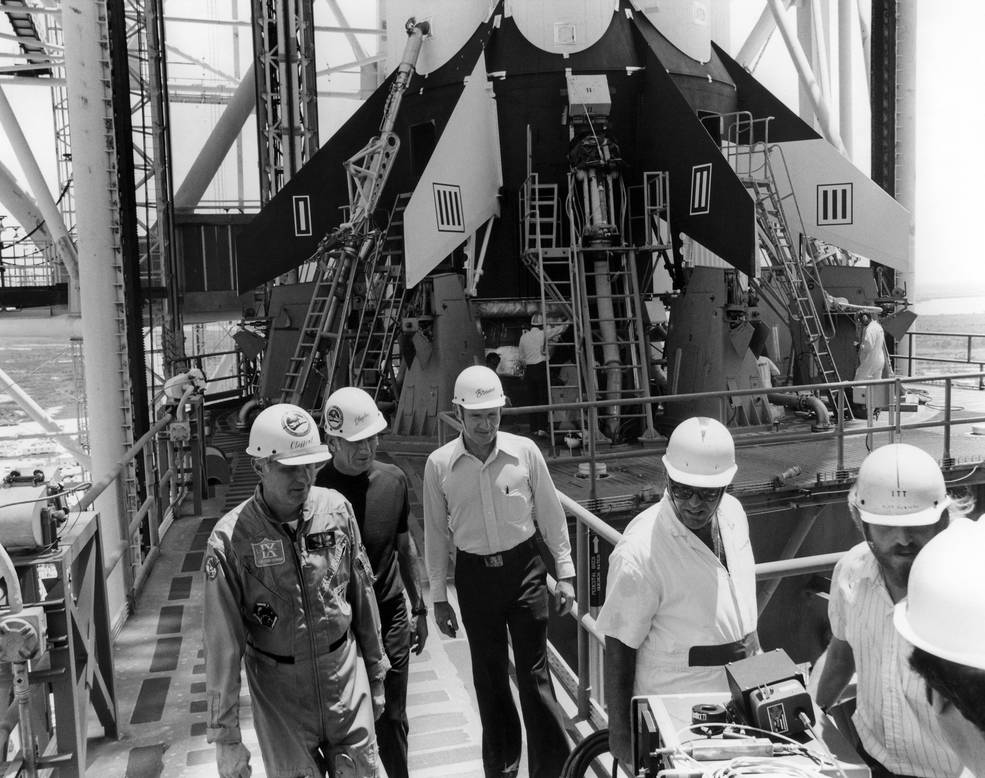
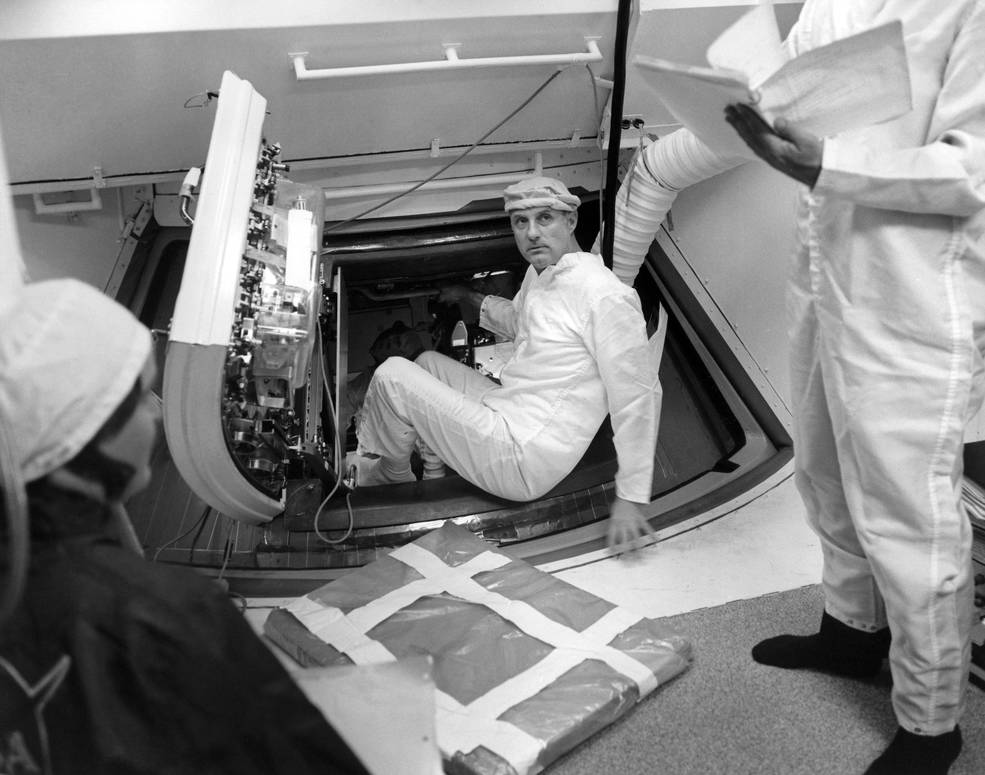
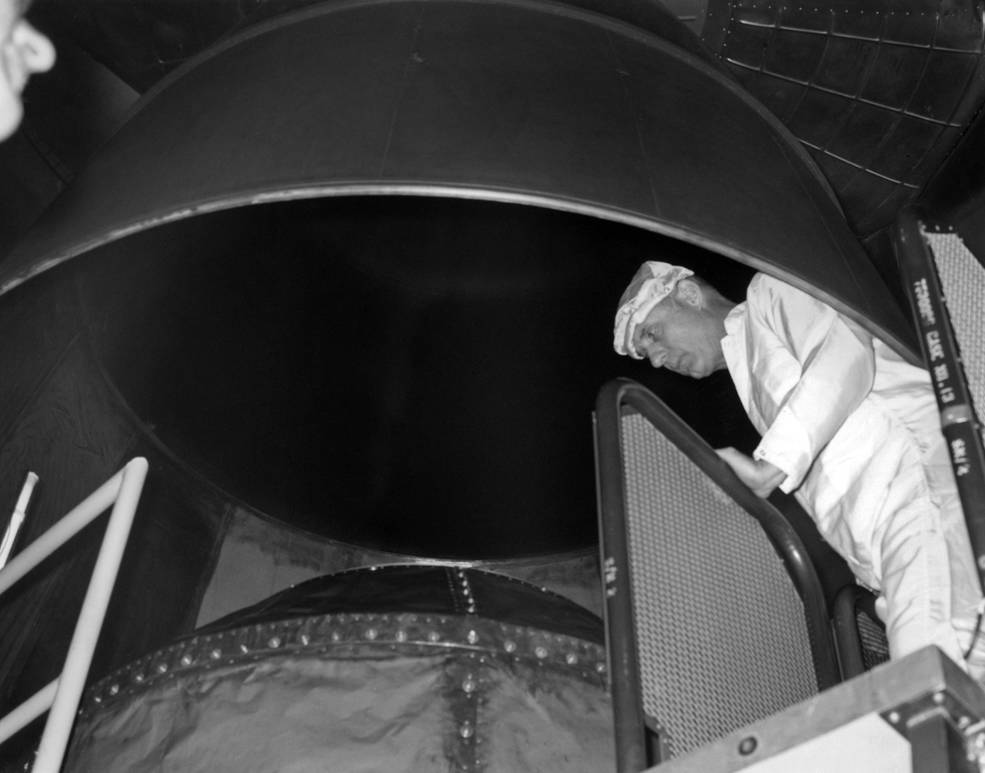
Left: ASTP Apollo astronauts (left to right) Stafford, Slayton and Brand near the base of their Saturn IB
rocket on Launch Pad 39B. Middle: Stafford at the hatch of their Command Module. Right: Stafford inspects
the Docking Module, standing under the Service Module’s engine bell, inside the SLA.
The prime Apollo crew of Commander Thomas P. Stafford, Command Module Pilot Vance D. Brand and Docking Module Pilot Donald K. “Deke” Slayton, and their backups Alan L. Bean, Ronald E. Evans and Jack R. Lousma, participated in a walkdown of Launch Pad 39B on June 10 at the Kennedy Space Center (KSC) where their spacecraft stood atop its Saturn IB rocket. At the pad, they completed the Crew Compartment Fit and Function Test, inspecting the Command Module (CM) and Docking Module (DM) in their final flight configurations to familiarize themselves with the stowage arrangements. To access the DM, the astronauts crawled through a service hatch in the Spacecraft Lunar Module Adaptor (SLA) and then stood beneath the Service Module’s large engine bell. Personnel at the pad continued to prepare both the rocket and the spacecraft for flight, including beginning the loading of propellants.
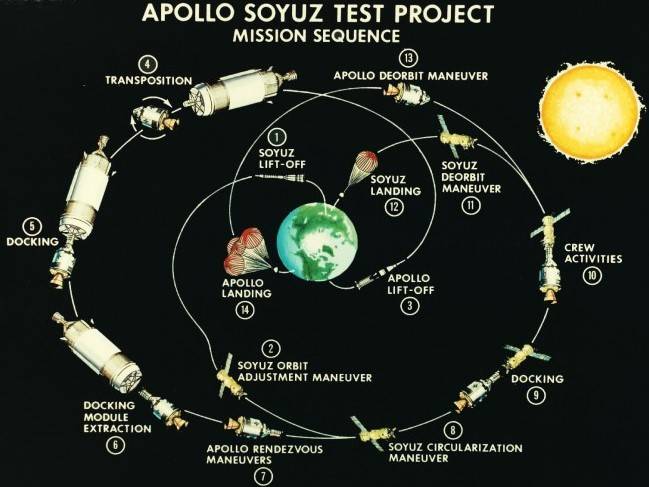
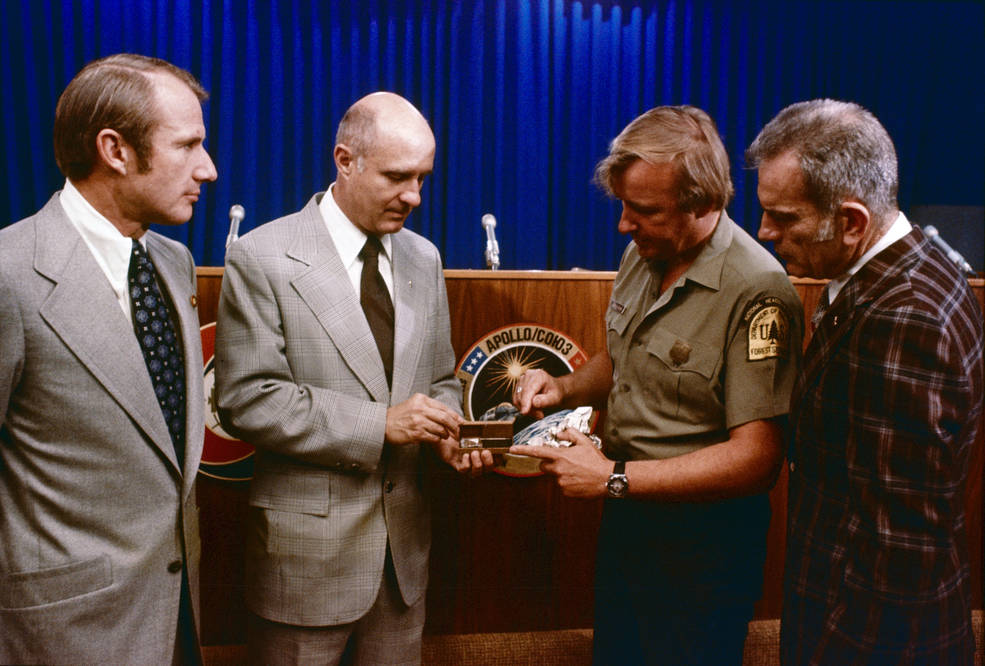
Left: Graphic representation of the ASTP mission sequence. Right: Astronauts
(left to right) Brand, Stafford and Slayton with USDA Forest Service project coordinator
Kovar (second from right) examining superior spruce seeds.
During a series of briefings for news reporters at the Johnson Space Center (JSC), officials described various aspects of the upcoming joint flight, including the mission profile, flight hardware, recovery operations and science experiments. Glenn A. Kovar, project coordinator with the United States Department of Agriculture’s Forestry Service, described a gift the astronauts planned to present to the cosmonauts in orbit. The Forestry Service prepared a package of superior white spruce tree seeds and a special wooden container. The seeds, enough to plant an acre, represent a superior breed of spruce tree with fast growth capabilities and yield trees of exceptional height and shape. The mature trees will reduce pollutants in the air, filter noise, acts as windbreaks and add natural beauty to the landscape.
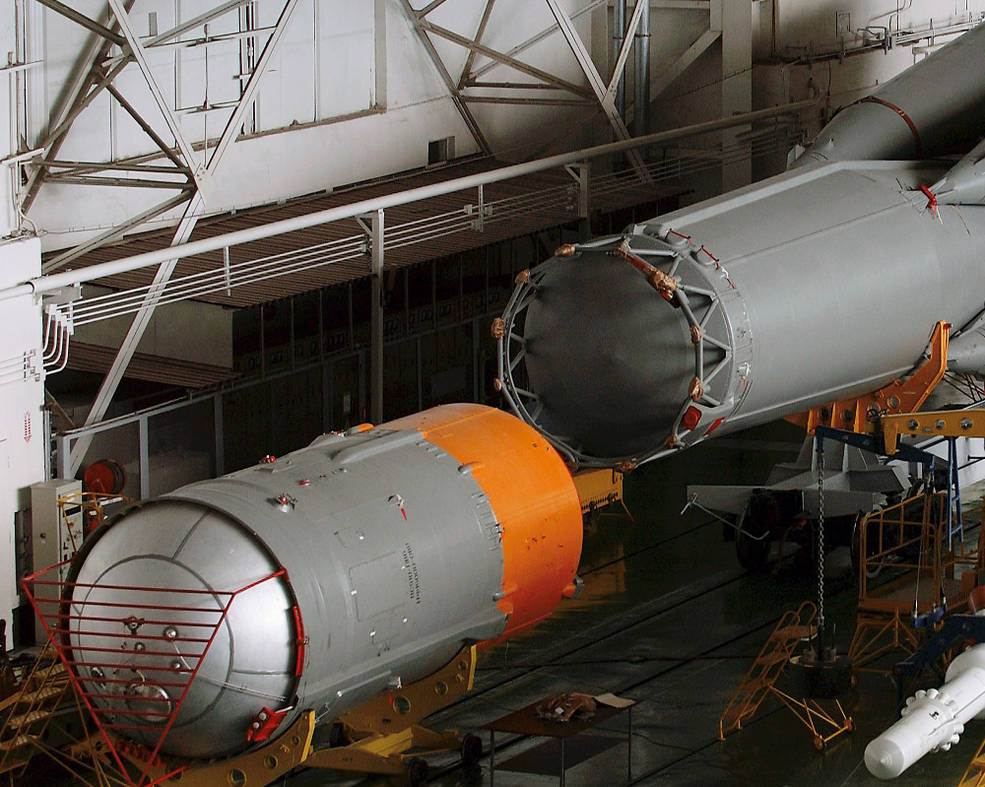
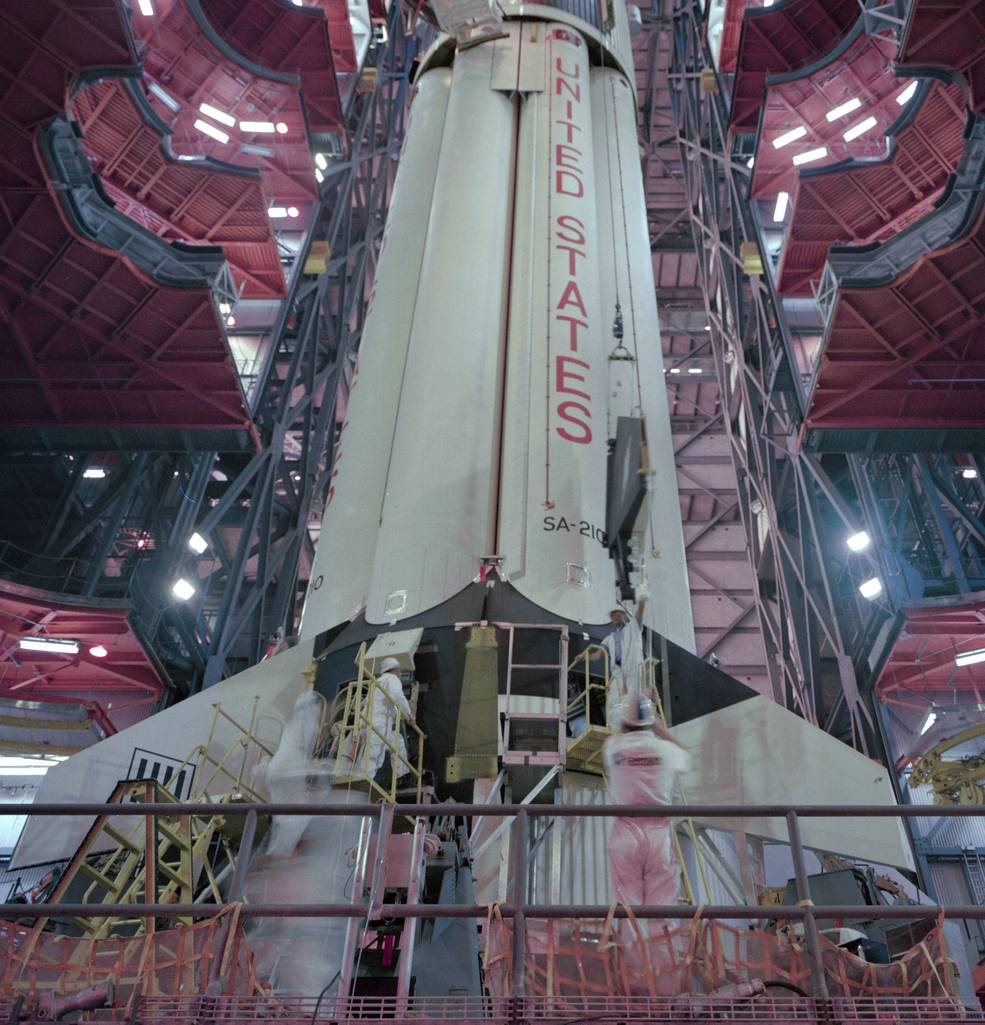
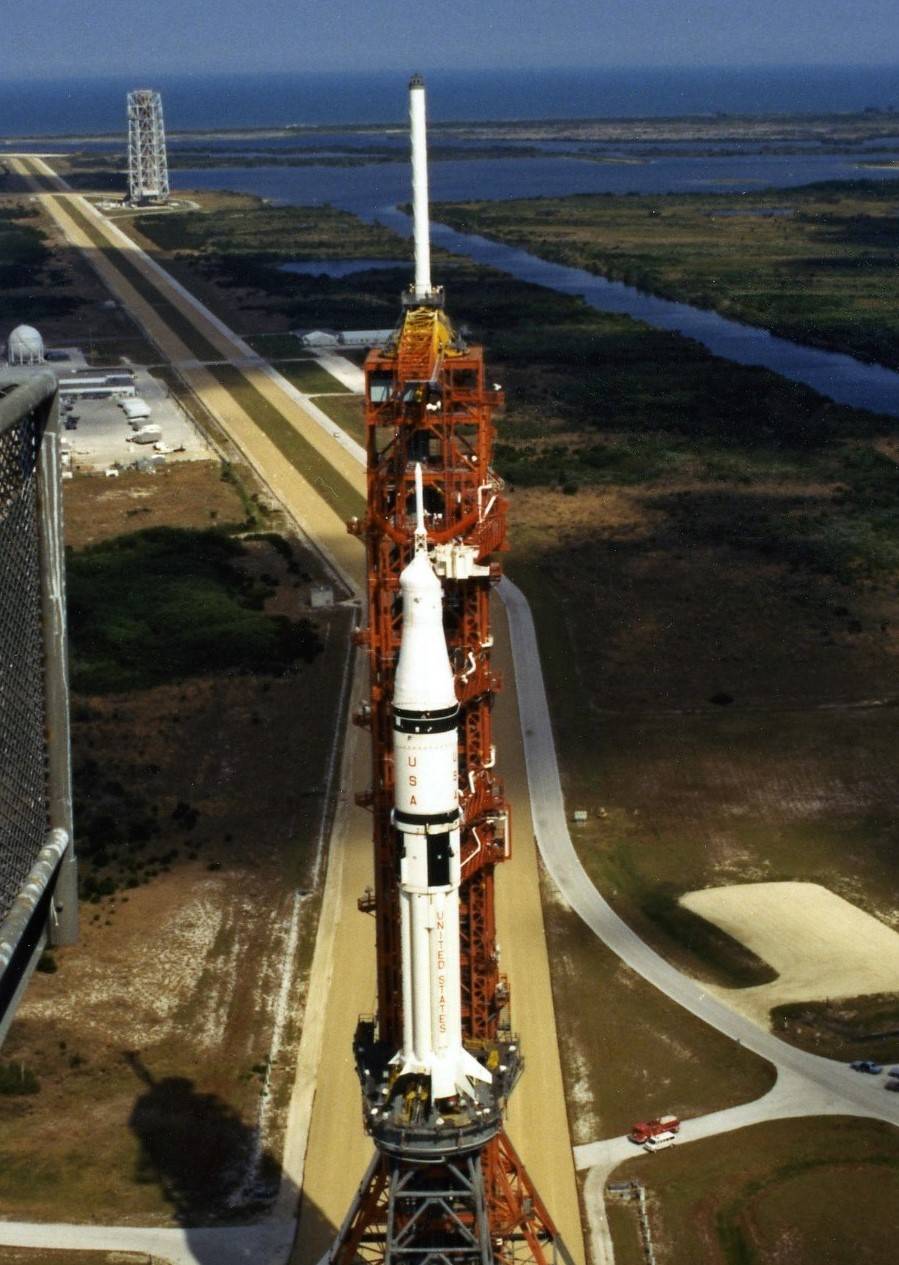
Left: Photograph of a Soyuz booster during assembly, showing the separation plane between
the second and third stages where the failure occurred during the April 5 launch abort.
Middle: Workers replacing the fins on the Saturn IB’s first stage. Right: The tall lightning
mast is visible atop the launch tower during the ASTP rocket’s rollout to the pad.
Senior managers from KSC, JSC and the Marshall Space Flight Center (MSFC) met at KSC on June 12, 1975, to conduct the Flight Readiness Review (FRR) for the ASTP Apollo mission. American ASTP Director Glynn S. Lunney presented results of the Joint Flight Readiness Review held in Moscow in May and the details the Soviets had provided about the April 5 Anomaly, a planned crew flight to the Salyut-4 space station aborted shortly after launch due to an incomplete separation of the rocker’s third stage. The Soviets provided assurances that a repeat of that failure scenario could not happen during the ASTP Soyuz launch since they would be using a newer version of the booster. Representatives from MSFC presented the readiness of the Saturn IB booster, a rocket that had been built in 1967 and kept in long-term storage, including inspections to ensure the nine-year-old rocket was safe to fly. Inspections had revealed cracks in the mounting pins for the fins of the first stage, resulting in their replacement. Managers from KSC summarized preparations for the launch and noted their primary concern remained weather at the time of launch on the afternoon of July 15, with potential for thunderstorms. They described the installation of a larger lightning rod atop the launch tower to prevent any damage to the vehicle in case of a lightning strike. At the conclusion of the FRR, all managers gave a GO to continue preparations for mission including the Countdown Demonstration Test, the final dress rehearsal for the launch, scheduled to begin June 25.
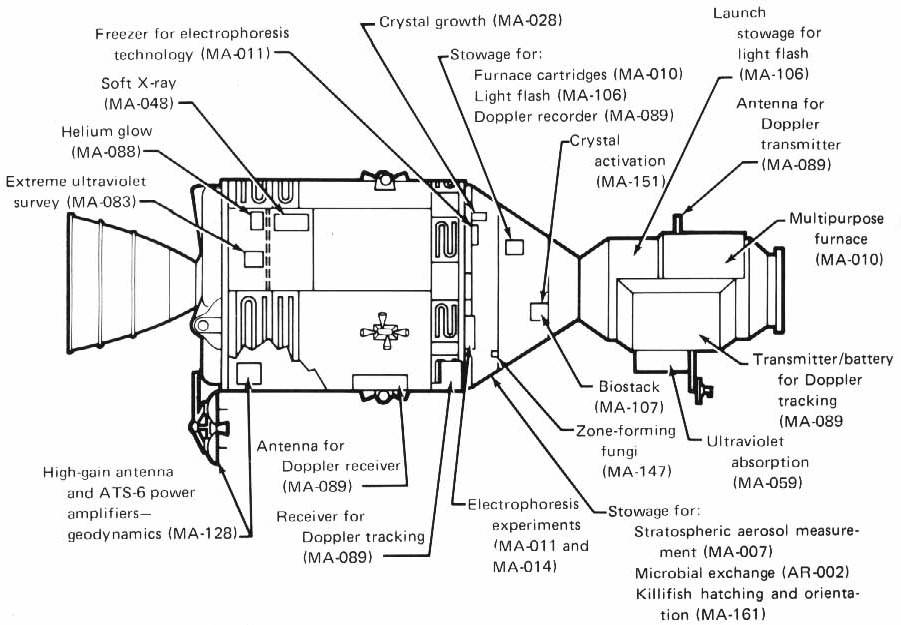
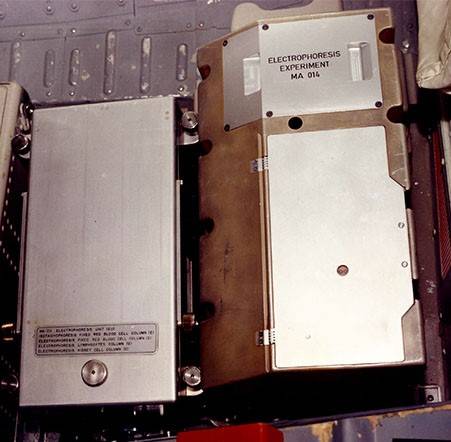
Left: Schematic diagram of the ASTP Apollo spacecraft showing the locations
of the science experiments. Right: The Electrophoresis Technology (left) and
the Electrophoresis Experiment hardware.
In addition to the historic handshake in space, the Apollo astronauts also planned to carry out 28 science experiments, five of them joint US-USSR experiments and two provided by the Federal Republic of Germany (West Germany). The table below summarizes the experiments in the fields of astronomy, Earth sciences, life sciences (radiation effects, immune system, vestibular system) and applications. More details on the experiments can be found here.
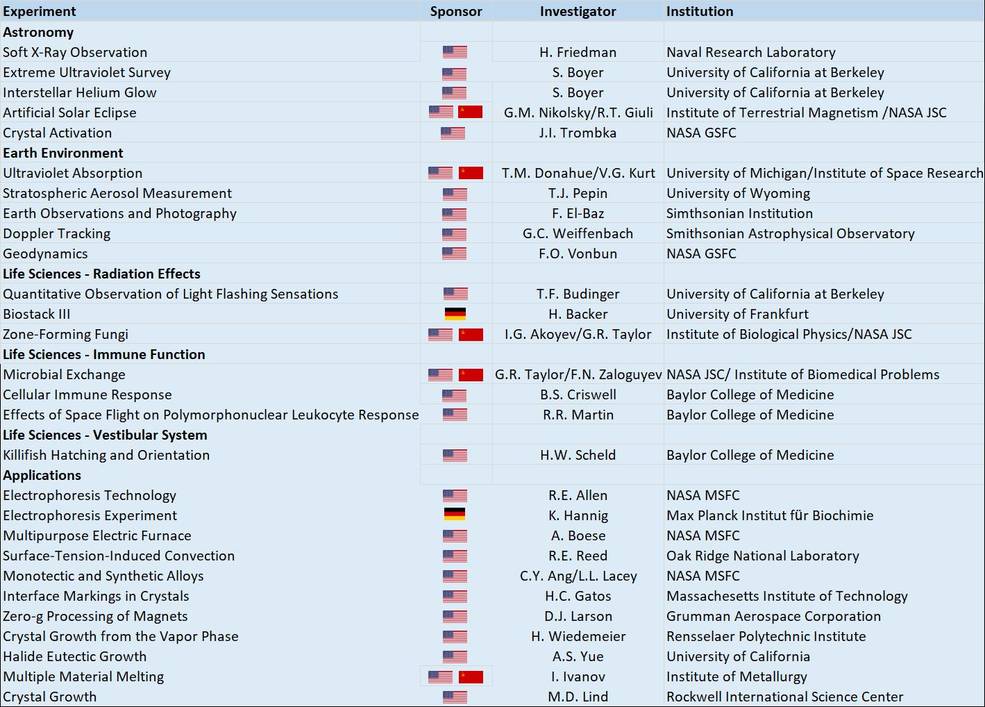
Table listing the experiments carried out during the ASTP mission.
To be continued…
News events from around the world in June 1975:
June 1 – California Angels pitcher Nolan Ryan pitches record-tying fourth career no-hitter
June 5 – Egyptian President Anwar el-Sadat reopens the Suez Canal, closed since 1967
June 7 – Sony introduces the Betamax videocassette recorder for sale
June 8 and 14 – Soviet Union launches Venera 9 and 10, they return first photos from Venus in October
June 20 – Film Jaws, directed by Steven Spielberg and based on the Peter Benchley novel, opens
June 25 – Barry White’s Can’t Get Enough of Your Love Babe is released


























